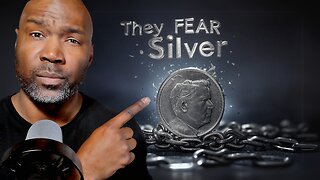Premium Only Content

The Life and Death of King Arthur II
Arthur: King of the Britons – From Celtic Hero to Cinema Icon.
Daniel Mersey’s Arthur – King of the Britons opens with a thought-provoking assertion: “There are two very distinct King Arthurs to consider – the Arthur of children’s stories, literature, and folklore, and the Arthur of history.” This distinction invites us to explore the dichotomy between the legendary figure celebrated in countless stories and the historical reality that may have inspired those tales. Yet, Mersey’s characterization of these two Arthurs is just one perspective, for recent historical research challenges even this dichotomy. According to historians Alan Wilson, Baram Blackett, and Ross Broadstock, there were not just two King Arthurs, but potentially five, each embedded within the ancient history of Britain. Their findings suggest a far richer and more complex tapestry of Arthurian legend and history than Mersey’s book presents.
The Case for Two Arthurs.
Mersey’s work primarily focuses on the King Arthur of legend – the one who drew the sword from the stone, led his knights of the Round Table, and was mentored by the mystical Merlin. This Arthur, as Mersey details, is a creation of mediaeval romance, rooted in the fertile imaginations of authors like Geoffrey of Monmouth and Sir Thomas Malory. In this narrative, Arthur is the illegitimate son of Uther Pendragon, conceived through the machinations of the sorcerer Merlin. His rise to power is marked by the famous pulling of the sword from the stone, a symbol of divine right and destiny.
However, the work of Wilson, Blackett, and Broadstock offers a radically different perspective on Arthurian history. They argue that the legends are based on the lives of two distinct historical figures, both of whom were named Arthur, and both of whom played pivotal roles in Britain’s ancient history. These two Arthurs were not just figures of legend, but real kings with verifiable genealogies and accomplishments.
The First Arthur: Arthur I, Son of Magnus Maximus.
According to Wilson, Blackett, and Broadstock, the first Arthur was the eldest son of Magnus Maximus, a Roman general who became Emperor and claimed descent from the British Constantine the Great. Arthur I lived from 355 to 388 AD and was a formidable warrior king. His reign is said to have extended Britain’s influence across Europe, conquering territories in Gaul, Spain, Southern Germany, Switzerland, and Italy. This Arthur’s exploits, as recorded in ancient Welsh chronicles, establish him as a significant figure in European history, far removed from the mythical king of mediaeval romance.
The Second Arthur: Arthur II, Unifier of Britain.
The second Arthur, according to this research, was born on Christmas Day in 503 AD, nearly 125 years after the death of the first Arthur. He was the son of Queen Onbrawst and King Maurice, and his grandfather, Theoderic, was a Paramount Pendragon King, a title that linked the lineage back to the Holy Family. This Arthur II is credited with uniting Britain and laying the foundation for the legend that would be immortalised in later centuries. Unlike the legendary figure who battled the Romans, this Arthur fought against the invading Saxons, securing his place in history as a defender of the British Isles.
Debunking the Myths: Merlin and the Sword in the Stone.
Mersey’s retelling of the Arthurian legend includes the familiar trope of Merlin as a sorcerer and the fantastical challenge of pulling a sword from a stone. However, the research of Wilson and his colleagues suggests a much more grounded interpretation of these stories. Merlin, they argue, was not a magical being but a powerful warlord and tutor to Arthur II. Far from being an enigma, Merlin was a historical figure who played a crucial role in Arthur’s upbringing, educating him in the arts of war and leadership.
The idea of pulling a sword from a stone, as romantic as it may be, is dismissed as mere folklore. The true path to kingship, as Wilson and his co-authors assert, was through established lineage and recognized heritage. Arthur II’s legitimacy was never in question; his royal blood and leadership abilities were well-documented and recognized by his contemporaries.
Reconciling Legend with History.
The contrast between Daniel Mersey’s portrayal of King Arthur and the historical research presented by Wilson, Blackett, and Broadstock underscores the complexity of the Arthurian legend. While the stories of Camelot, Excalibur, and Merlin have captivated audiences for centuries, the historical Arthurs – if indeed there were more than one – reveal a deeper and more intricate narrative.
The enduring appeal of King Arthur lies in his ability to be reimagined and reinvented across generations. Whether as a mediaeval hero wielding a magical sword or as a historical king defending Britain from its enemies, Arthur’s legacy continues to resonate. As cinema and literature bring these stories to life, it is worth remembering that behind the myths lies a history that is just as compelling, filled with real battles, dynastic struggles, and the forging of a nation.
In the end, the legend of King Arthur is not just a tale of one man, but a reflection of the enduring human desire to connect with a heroic past. Whether through the lens of folklore or history, Arthur remains a symbol of the ideals that have shaped Britain’s identity – courage, leadership, and the quest for unity in the face of division.
-
 LIVE
LIVE
BonginoReport
2 hours agoLeft Demands Return of MS-13 Gang Member - BR Early Edition w/ Evita (Ep.182) - 04/15/2025
27,140 watching -
![🔴[LIVE] MASSIVE Swings Incoming! || The MK Show](https://1a-1791.com/video/fww1/71/s8/1/F/s/c/C/FscCy.0kob-small-The-MK-Show-Apr.-15th.jpg) LIVE
LIVE
Matt Kohrs
11 hours ago🔴[LIVE] MASSIVE Swings Incoming! || The MK Show
1,684 watching -
 LIVE
LIVE
Wendy Bell Radio
4 hours agoLiberals Love Criminal Illegals More Than They Love America
7,421 watching -
 LIVE
LIVE
Dear America
13 hours agoAustin Metcalf Killer RELEASED, JD Vance Fumbles CFP Trophy + CNN Gets Bullied In The Oval Office!
3,597 watching -
 LIVE
LIVE
Major League Fishing
22 hours agoLIVE Tackle Warehouse Invitationals, Stop 3, Day 1
1,642 watching -
 1:19:29
1:19:29
Game On!
12 hours ago $1.79 earned8,000 Subscriber Celebration Stream!
6.93K -
 28:30
28:30
Degenerate Jay
14 hours ago $2.25 earnedThe Rejected 007 Quantum Of Solace Ending That Would Have Changed James Bond
16.6K6 -
 11:37
11:37
ARFCOM Reviews
14 hours ago $1.05 earnedNew Budget Comp'd Carry || Canik MC9 PRIME
10.4K4 -
 8:22
8:22
Rethinking the Dollar
17 hours agoSilver vs CBDCs: The Battle for Financial Freedom
14.7K6 -
 55:15
55:15
MTNTOUGH Fitness Lab
17 hours agoTJ Dillashaw: Embracing Fear as a Privilege | MTNPOD #112
8.86K2